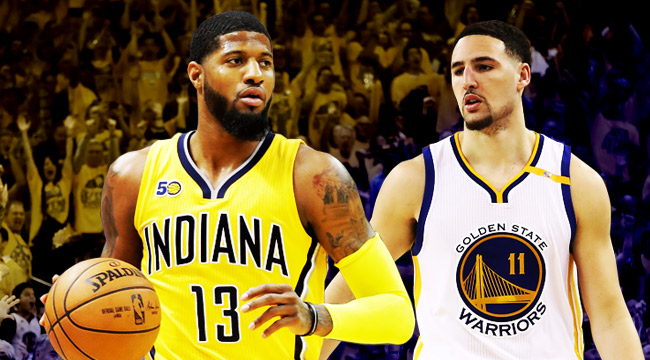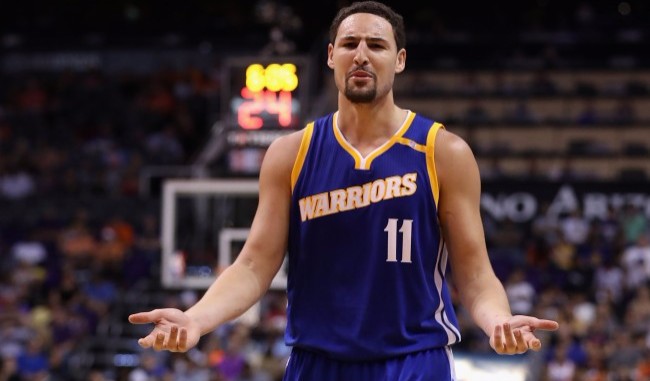
Arguably the biggest move of the NBA offseason happened hours before free agency started when Paul George was dealt by Indiana to the Oklahoma City Thunder for Victor Oladipo and Domantas Sabonis. The move shifted even more power to the West in the arms race to catch up with the Warriors, but we’ve learned recently that Golden State had a chance to try and land George and passed.
Adrian Wojnarowski of ESPN asked George on Thursday about rumors that the Pacers made an offer to the Warriors to swap Klay Thompson for Paul George, but Golden State declined. George told Woj that he felt that had the Warriors said yes the league would have stepped in and, like the Chris Paul-Lakers trade years ago, stopped it.
Paul George to @wojespn's re: Indiana talking to Golden State about him: "Yeah, I think that would’ve been the Chris Paul to L.A. situation" pic.twitter.com/occfnd72jQ
— Fred Katz (@FredKatz) July 13, 2017
That the Warriors turned down the trade offer seems like a surprise to many, but it’s the right move considering both fit and Golden State’s salary cap situation. Paul George is a better basketball player than Klay Thompson, but with Kevin Durant already there — who is better than George — the Warriors already have a player that can do the things George does on the floor.
George is a player that, like Durant and Steph Curry, likes to have the ball in his hands. Last season, George dribbled the ball at least twice on 44.5 percent of possessions ending in a George shot. Conversely, Thompson dribbled more than once on only 19.8 percent of his possessions where he took a shot.
This isn’t to say George wouldn’t have worked in Golden State or that the Warriors wouldn’t have continued to be a juggernaut and won a second straight title next season, but Thompson is better at providing Golden State with what they need on offense out of a tertiary star than George. Thompson shot 43.3 percent on catch-and-shoot threes, while George shot 41.9 percent. Thompson hit 46.8 percent of his wide open threes, while George hit 41.7 percent. By any perimeter shooting metric, Thompson is better than George, which is part of what makes Golden State so unstoppable.
You can make the argument that George would give the Warriors a dynamic that Thompson doesn’t provide. He also could fill in well enough as a spot-up shooter that he could make Golden State just as good if not slightly better on the court. I’d disagree, but there’s an argument that could be made. However, the biggest reason why the Warriors were smart to turn down was what adding George would do for their ability to keep their dominant roster together in the future.

Bobby Marks, formerly of The Vertical and now of ESPN, outlined the long-term (very expensive) plan that allows Golden State to pay every one of their four stars max money should they choose to over the next few years. The first part has already been completed, with Steph Curry getting a max deal this summer and Kevin Durant taking a significant pay cut on a 1 + 1 deal.
With Thompson and Green’s contracts structured as they are, Durant will be able to opt out next summer and sign the max contract he’s so deserving of, with Thompson coming up for a contract in 2019 and Green in 2020. With all three spaced out, Golden State has a path to re-signing all four and remaining the title favorite for the foreseeable future. If they bring George in, it complicates matter significantly with both he and Durant coming up this summer.
The cap situation — as it has for the past three years — has panned out perfectly for Golden State as presently constructed. It might cost over $1 billion to maintain, but for a team that’s seen its valuation skyrocket over the past two years and entering a new arena in 2019 in San Francisco, it’s money well spent to continue to be the elite of elite in the Association. The Pacers were smart to try it, considering Klay Thompson is very good and they could probably convince him to stay beyond two years with a designated player max, but for the Warriors, there was never a reason to make the move on the court or on the cap sheet.






